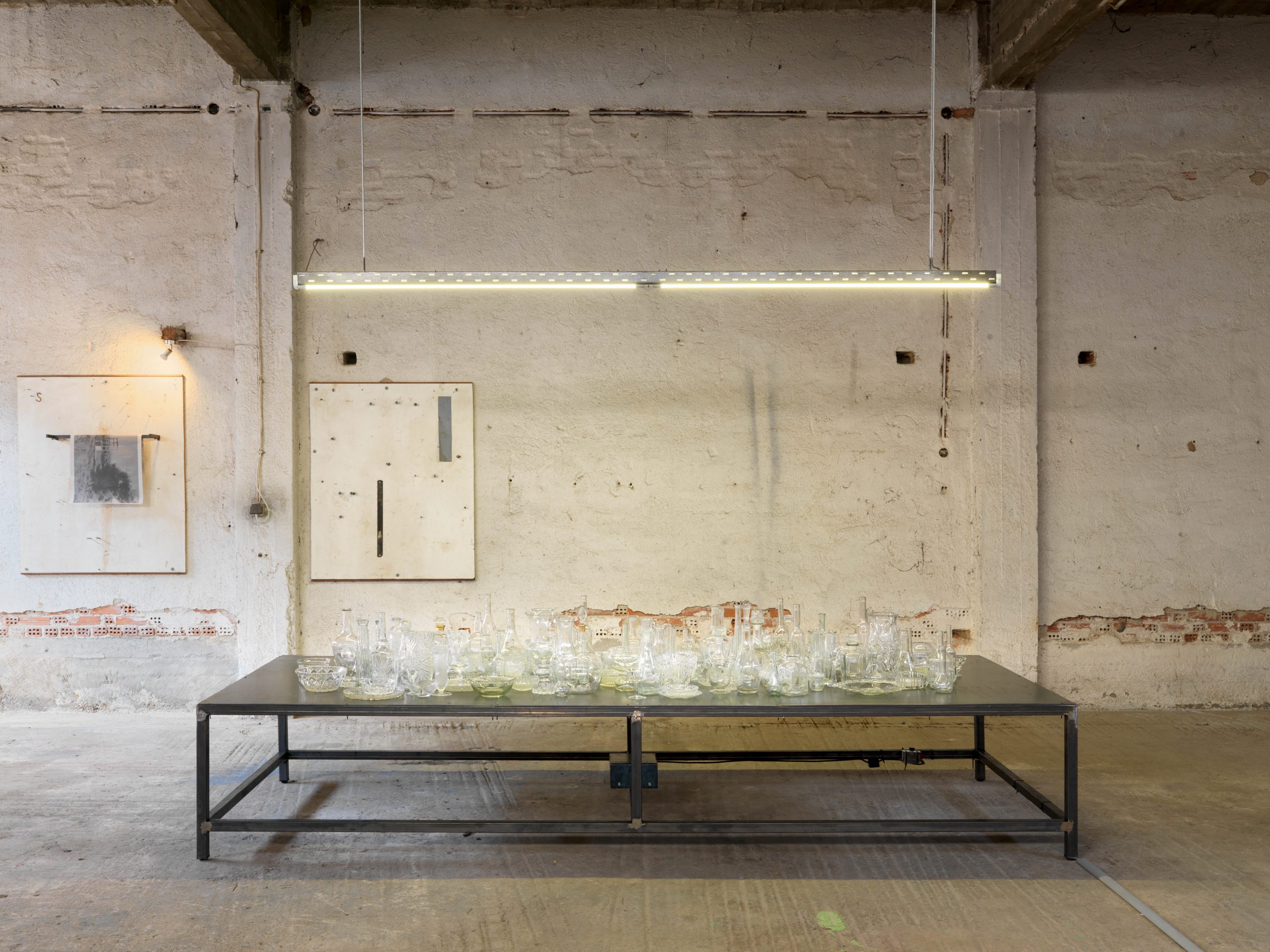
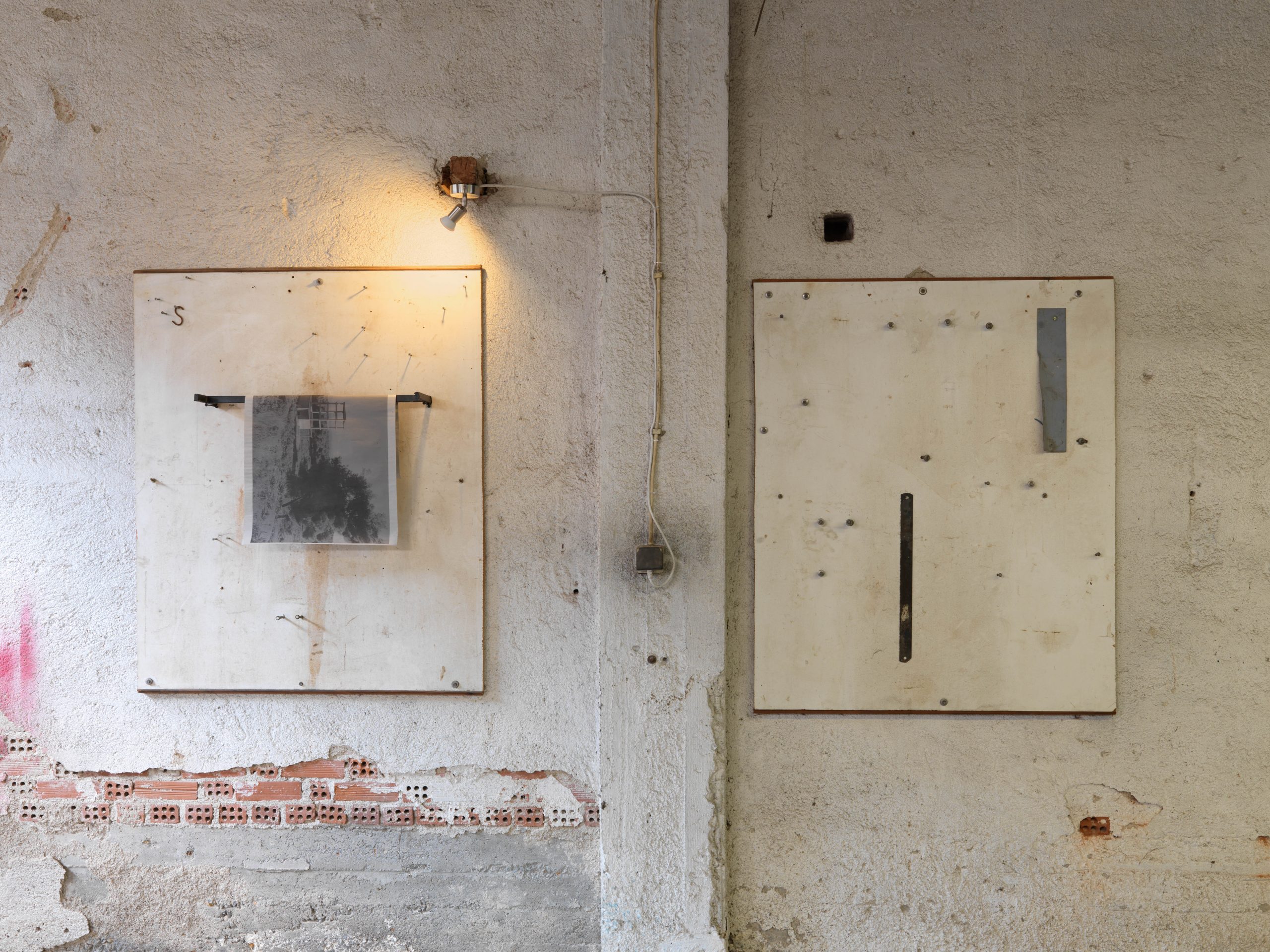
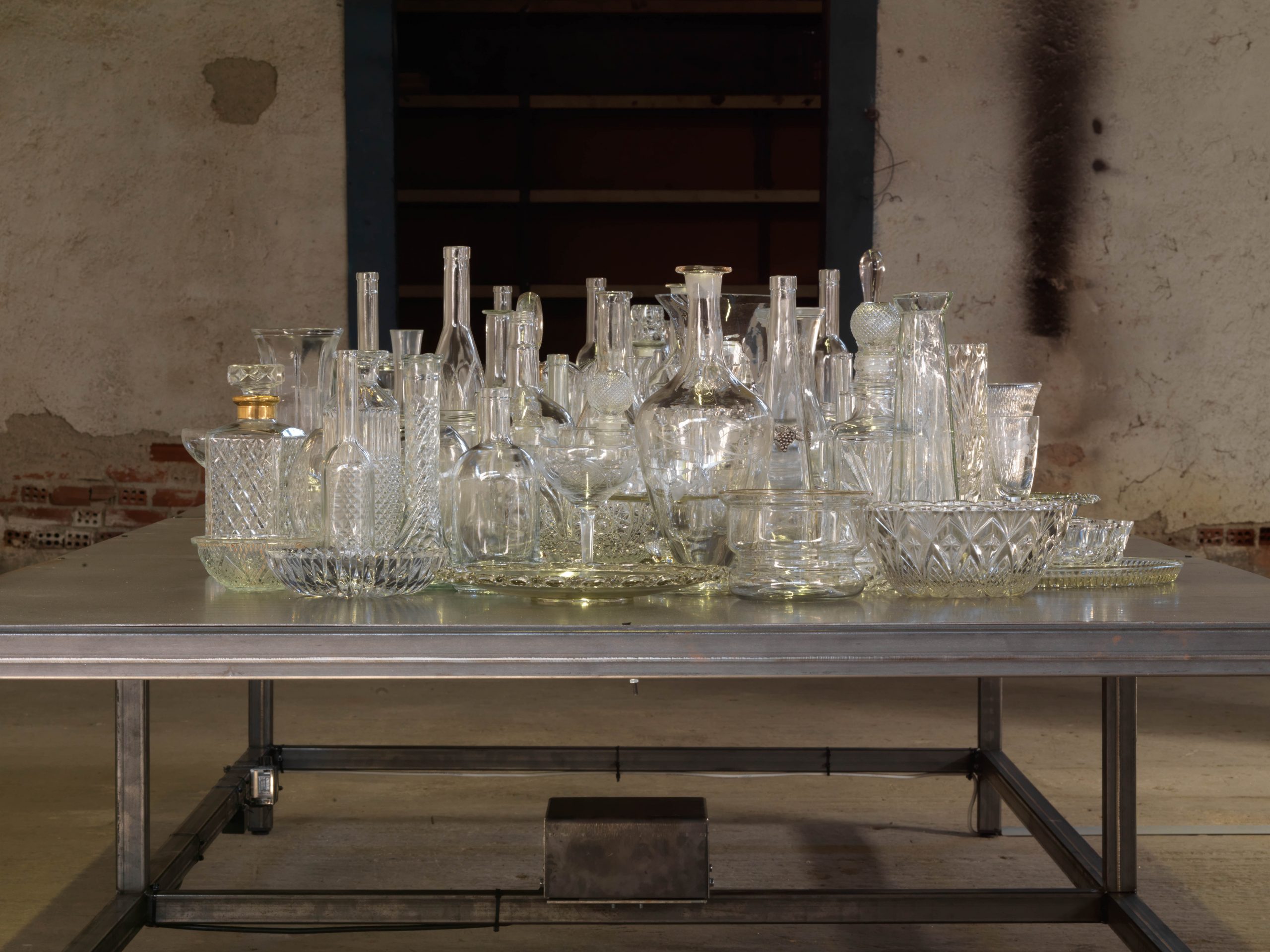
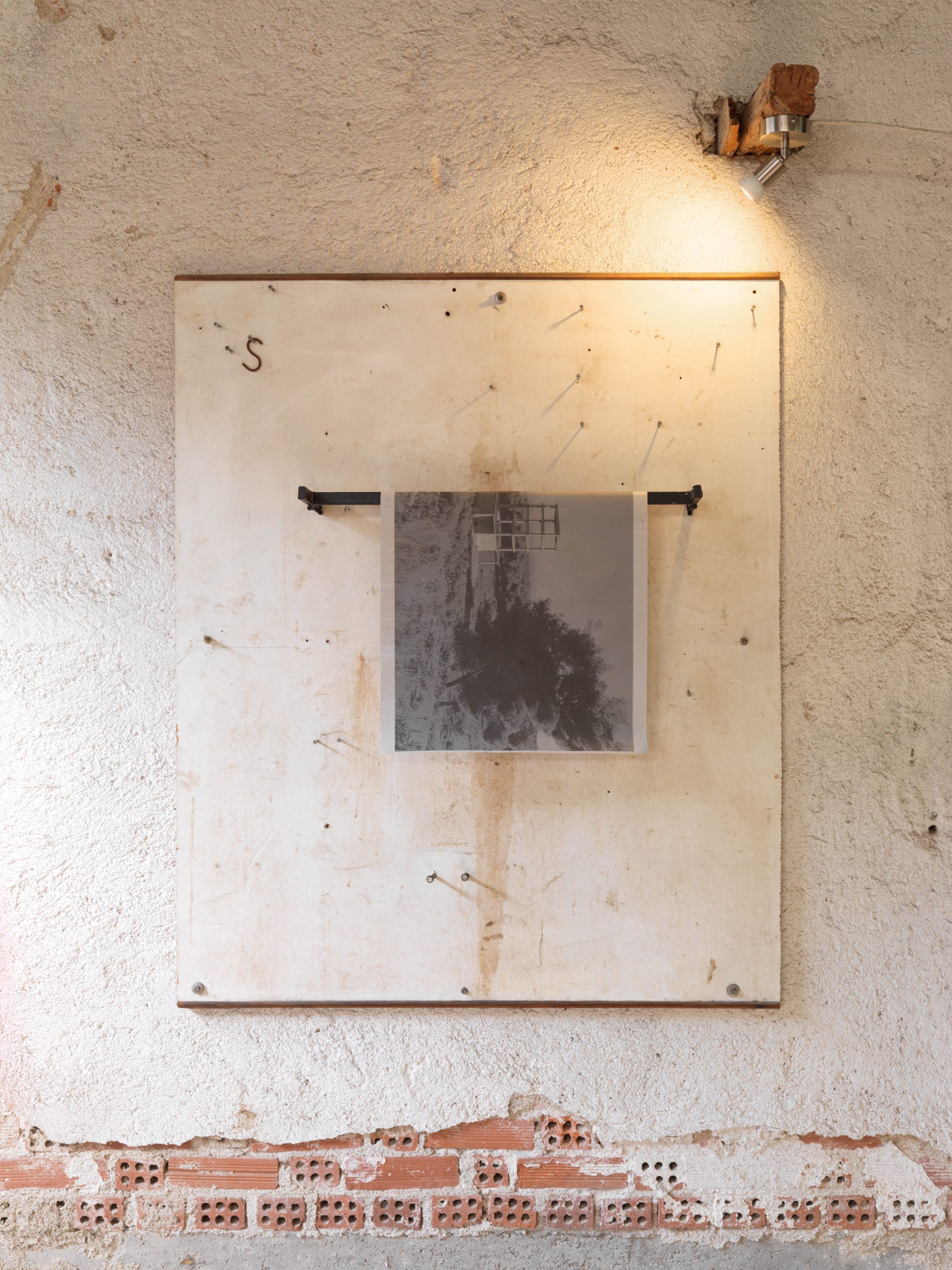
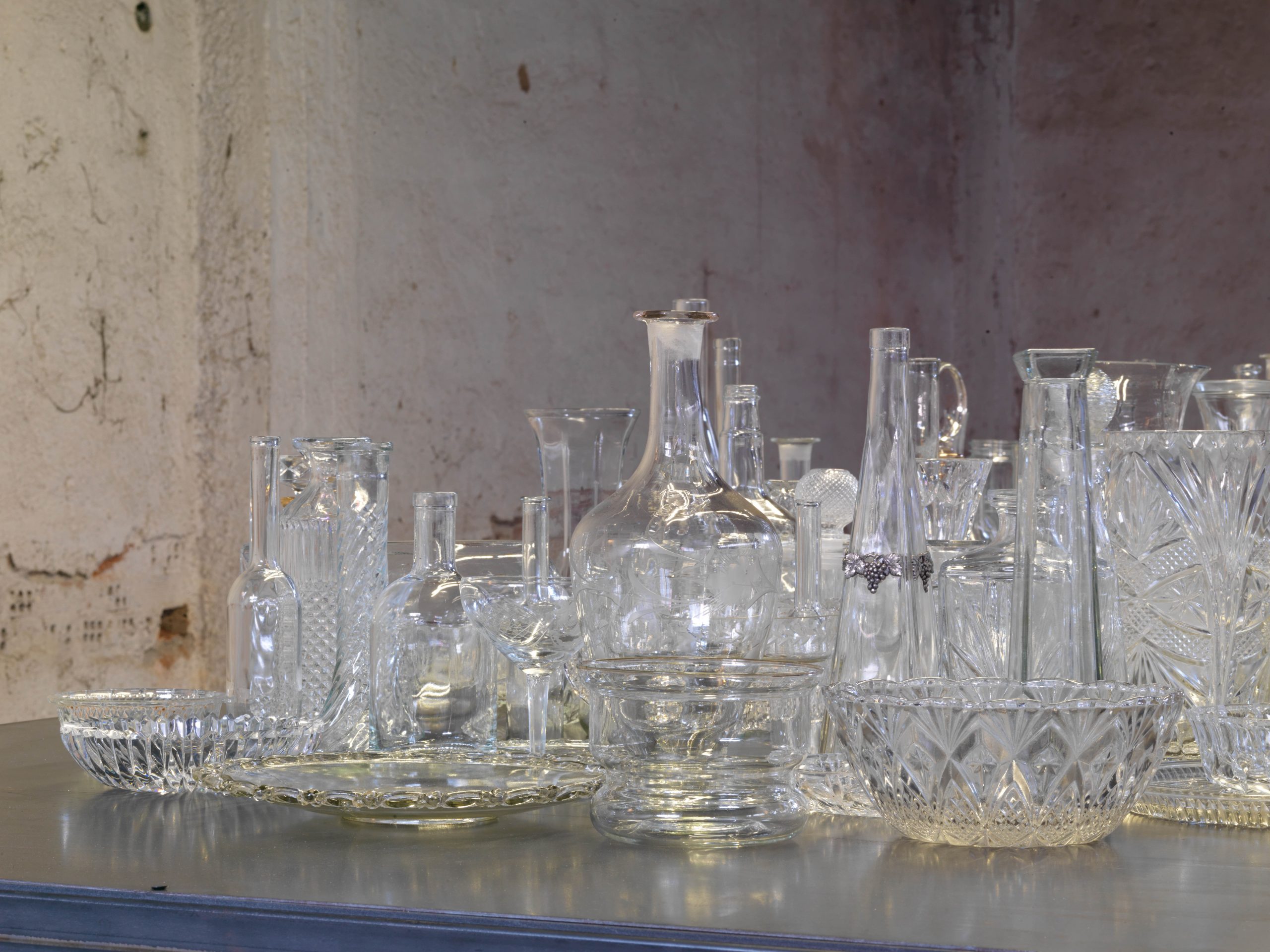
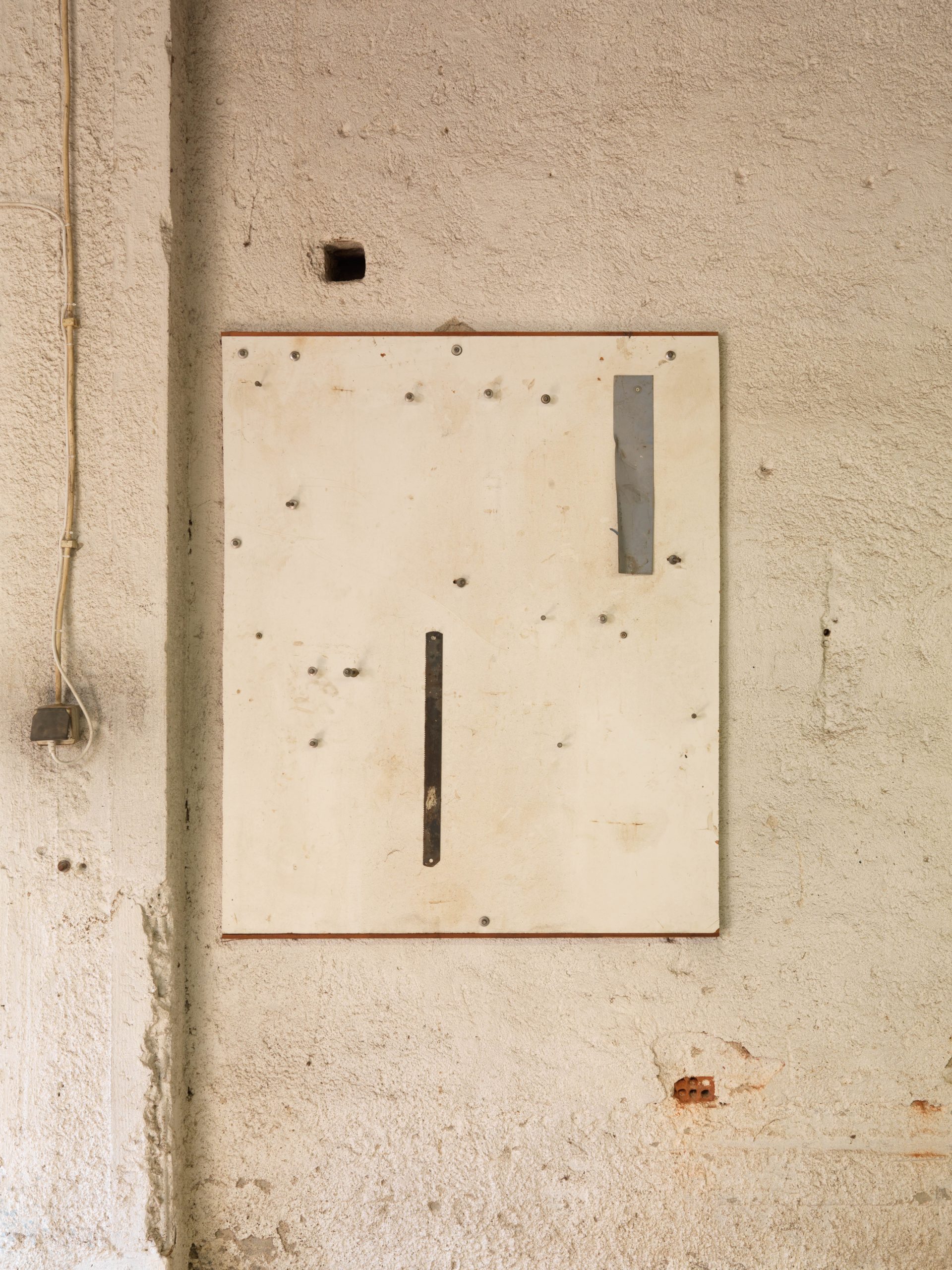
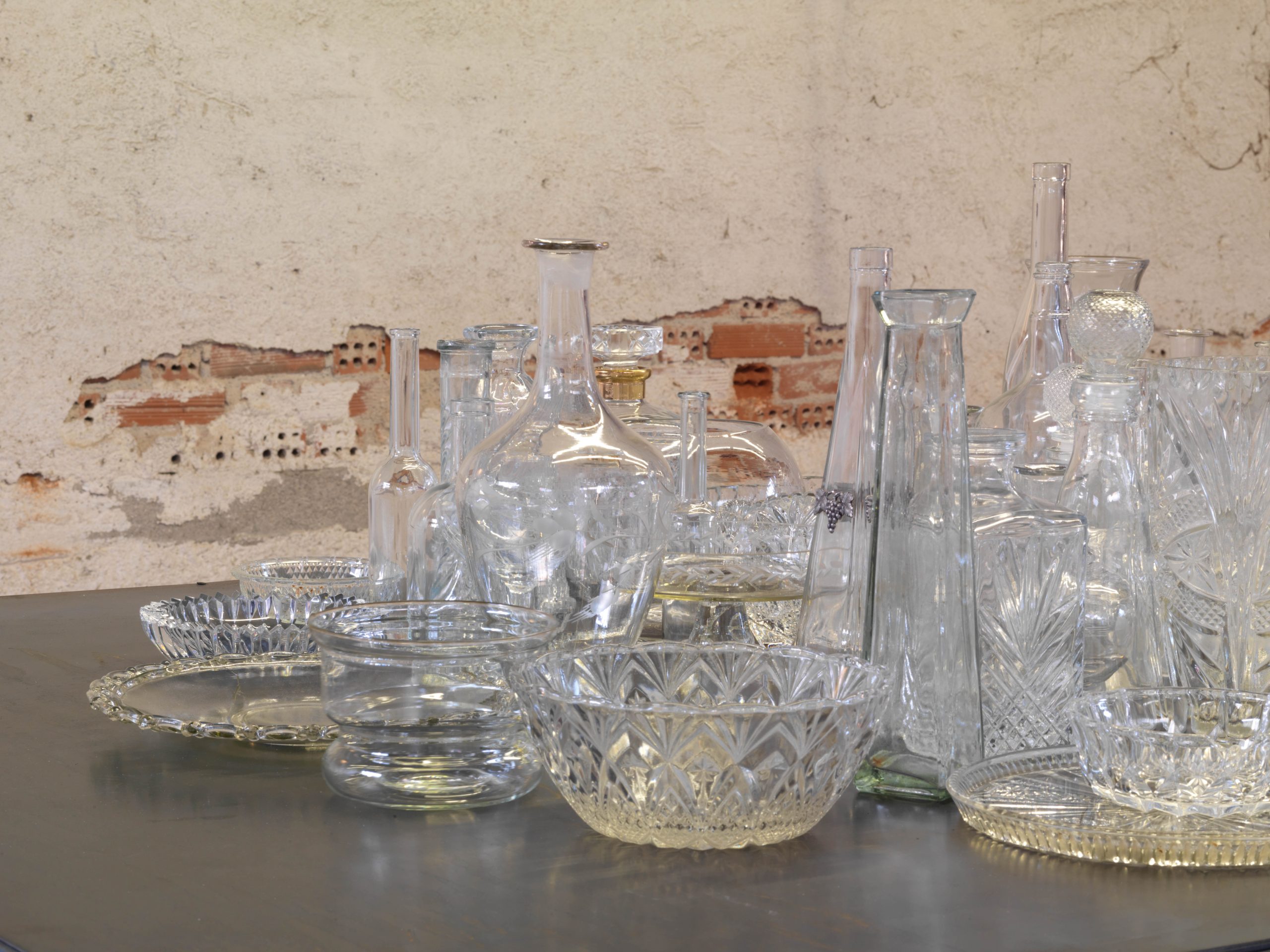
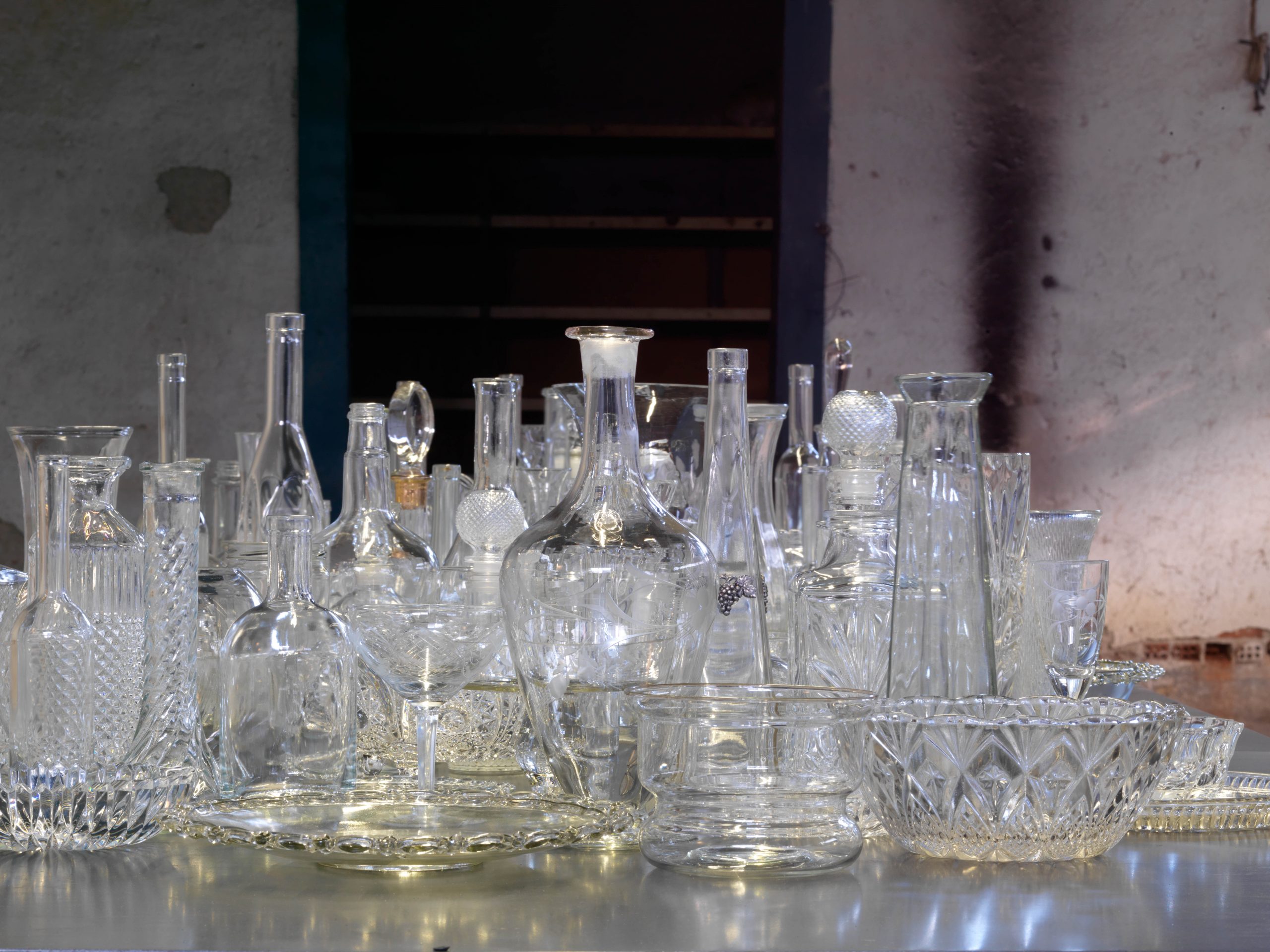
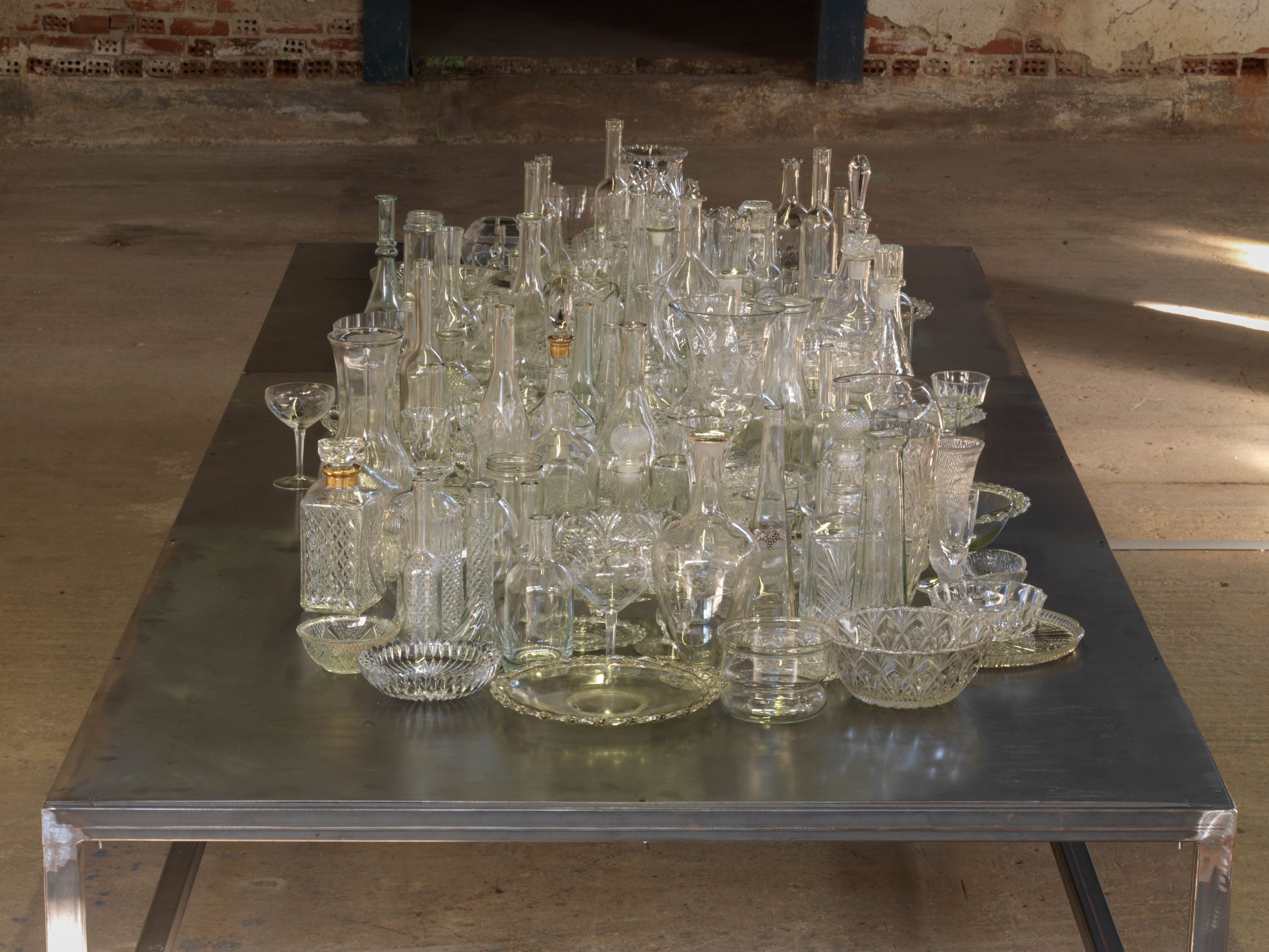
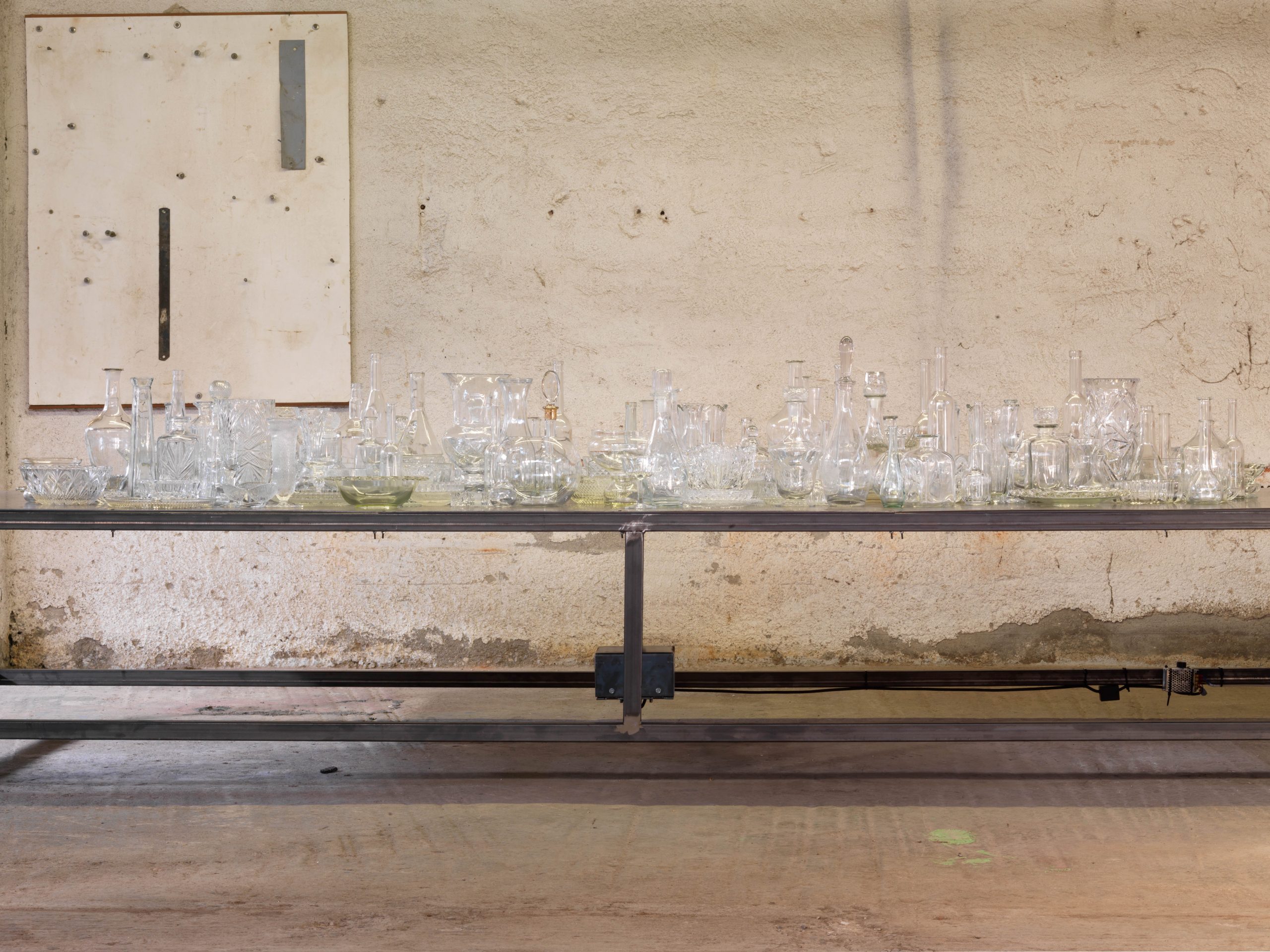
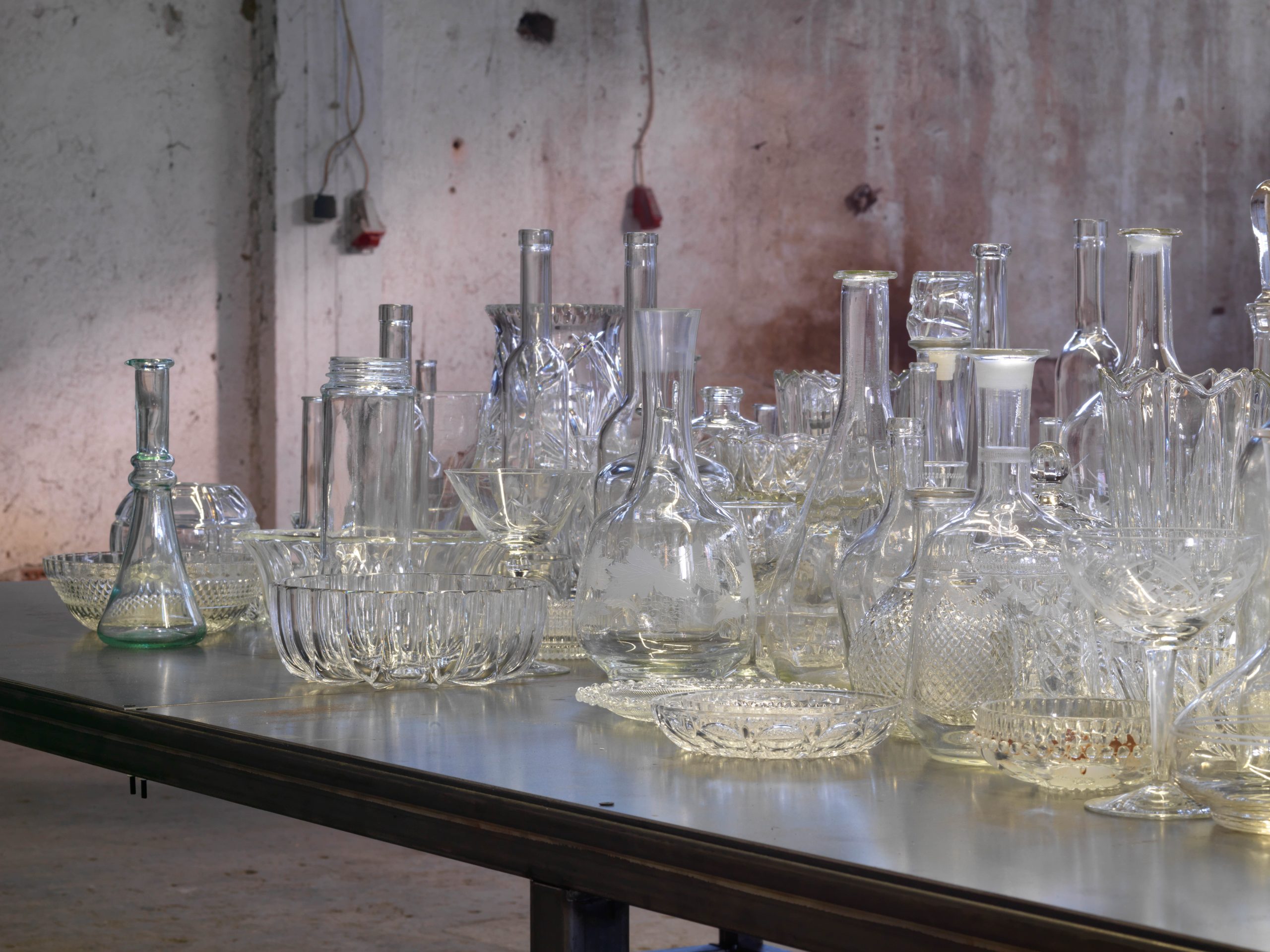
STATE OF EMERGENCY | 2023
As part of 2023 Eleusis European Capital of Culture, Athanasios Kanakis presents an installation titled State of Emergency (2023). The work is inspired by the disastrous and historically unprecedented flooding which hit the western suburbs of Attica in 2017, drawing from the personal experience of the artist and his family in Mandra, Attica —Kanakis’ birthplace and one of the main areas affected by the disaster.
Mandra is a suburb that lies at the foot of Mount Patera, northwest of Eleusina. The surface it covers is said to comprise the area west of the ancient Rharian Field (a land blessed by the gods with the first cultivation of barley) as well as the cities of Eleutherae and Oinoe, both of which were important sites for Athens and its surrounding areas and linked to the cult of Dionysus. Throughout the centuries, local populations were engaged in agricultural work. However, with the dawn of the modern Greek state, the area gradually began to attract commercial and industrial interest and house worker populations. Today, a quick web search reveals that Mandra is “the largest logistics area” in Attica. On the satellite map, around the more densely built part of the city that grows next to the edge of the forest, one can perceive huge, irregular expanses of warehouse buildings dotted with sparkling sheet metal and all types of construction materials scattered through vast plots of land, as well as deep trenches, i.e., the national road network extending all the way to the sea.
Athanasios Kanakis has always worked on the notion of space, whether inhabited or uninhabited, as well as matter and the traces they leave behind. His installations are explorations of different versions of space, in which the imperceptible human presence is witnessed as memory, gesture or intention. Almost—and often entirely—architectural, his works render places abstractly familiar, but also unexpectedly broken down into their constituent parts. Room outlines, frames and parts suspended in time articulate points in space. It is unclear whether these environments are the remnants of a past habitation, the ideal conditions for a new one, or the contours of a utopian projection. Up to 2017, Kanakis’ site-specific works were subsequently torn apart, dismantled or transformed, or even remained on the site.
On the 15th of November 2017, the city of Mandra was flooded. Torrents submerged the area in mud rising up to two meters from the ground level, resulting in 24 officially reported human deaths, the loss of dozens of animals and tremendous material damage. The floodwaters entered many homes, including the artist’s family house. A few days later, he found himself washing the mud off the remaining household items, sorting through objects belonging to him and his family that had been mixed with random things and other families’ unknown heirlooms tangled up in the debris.
State of Emergency is the result of an urgent emotional response and a highly charged artistic investigation emanating from the personal experience of disaster and the desire to preserve memory. Through the work, collective trauma becomes a means through which to reflect on the relation between modern economy and nature. Athanasios Kanakis brings to an old machine works (3, Filomila str.-Karaiskaki-Kanellopoulou str.) of Elefsina, located just a few miles away from Mandra, a selection of glassware, part of which, against all odds and completely incidentally, managed to be salvaged in some of the houses. Elegant forms, glossy surfaces, high necks, delicate “bubbles”, shiny sets of glasses, pitchers and jugs, formal tableware. Thanks to their fragility and sophistication, these items were usually placed behind display cases or in chests of drawers, always on the highest shelf, kept out of the reach of children and, as it turned out, mud.
After experiencing the devastation, the mourning for the loss of the archetypal home engraved on his family’s memory as well as the process of reassembling and re-inventing the hearth, the artist addresses the community of Mandra. He meets residents and neighbors, revisits the collective trauma, listens to stories and tells some of his own, observes and connects with the mechanisms developed to recover from the event and to assimilate precarity into everyday life. As tokens of the fragility offered to the artist, some of the residents give their own glass objects salvaged from the flood.
The recipients Kanakis brings together constitute a fragile monumental topography, subject to constant, threatening oscillations. The resulting glass landscape is sensitive to external forces, ever changing, constantly vibrating, deteriorating, cracking, with parts of it being destroyed every day. What will be left after the destruction-exhibition? What fills the space between what we strive to salvage and what finally manages to survive? In the state of emergency, everything reverts to a single organic matter: the living, the human material, all crystallize into a volume orchestrating a deceleration of its cycle of existence.
Five years after the floods, the Greek courts ruled that the cause of the disaster was the criminal negligence displayed by certain people holding positions of power as well as some members of the business community. According to a scientific report, the key factors that led to the Mandra floodings were the following: reckless human intervention, inadequacy of engineering works, a complete lack of flood protection measures and the changes caused to the landscape following
wildfires that had previously broke out in the area.1 State of Emergency stages the climax of an ongoing drama: the outbreak of a natural disaster and the exact moment of declaring the state of emergency —right when all other natural elements are seen as posing a threat to human life. The tragic realisation of a preordained mass retreat: the painful dichotomisation of a holistic ecosystem giving rise to an unbearably simplified juxtaposition opposing man to nature. The memory of the trauma of a violent separation, the sense of truly missing the time when we used to be “one”.
Athanasios Kanakis draws equally from both his capacities in this project, questioning the manifold ways through which narratives about the flood are produced both as a former resident of Mandra and as an artist. On the one hand, he produces a highly personal work, seeking his sources in his own relationship with space, his family, the land of the western suburbs of Attica as well as private memory records. On the other hand, he gives center stage and illuminates a series of political concerns relating to contemporary art, cultural institutions and artists as discourse-producing agents on environmental issues and communities facing precarity. Given that the consequences of land oppression affect mainly the working and impoverished classes, to what extent and through which process can the privileged field of art legitimately address the topic of disaster?
State of Emergency is the story of an extended family, the protest of a community, the reverie of a resident, the intercept of an extraordinary event that returns as a wound from the past and a call to action for the present.
Exhibition Credits: Curation & Text: Christina Petkopoulou Translation: Natassa Sideri Images: Stathis Mamalakis Film: Spyros Skandalos
Production: WILD REEDS (Panos Giannikopoulos & Georgia Liapi)
Project Coordination: Zoi Moutsokou – Directorate of Contemporary Art 2023 Eleusis
2023 Eleusis European Capital of Culture
1 “An analysis of the 15/11/2017 western Attica floods using satellite remote sensing data”, 22/01/2018, BEYOND Excellency Center and National Observatory of Athens, available on http://www.beyond- eocenter.eu/images/news-events/20180430/Mandra-Report-BEYOND.pdf